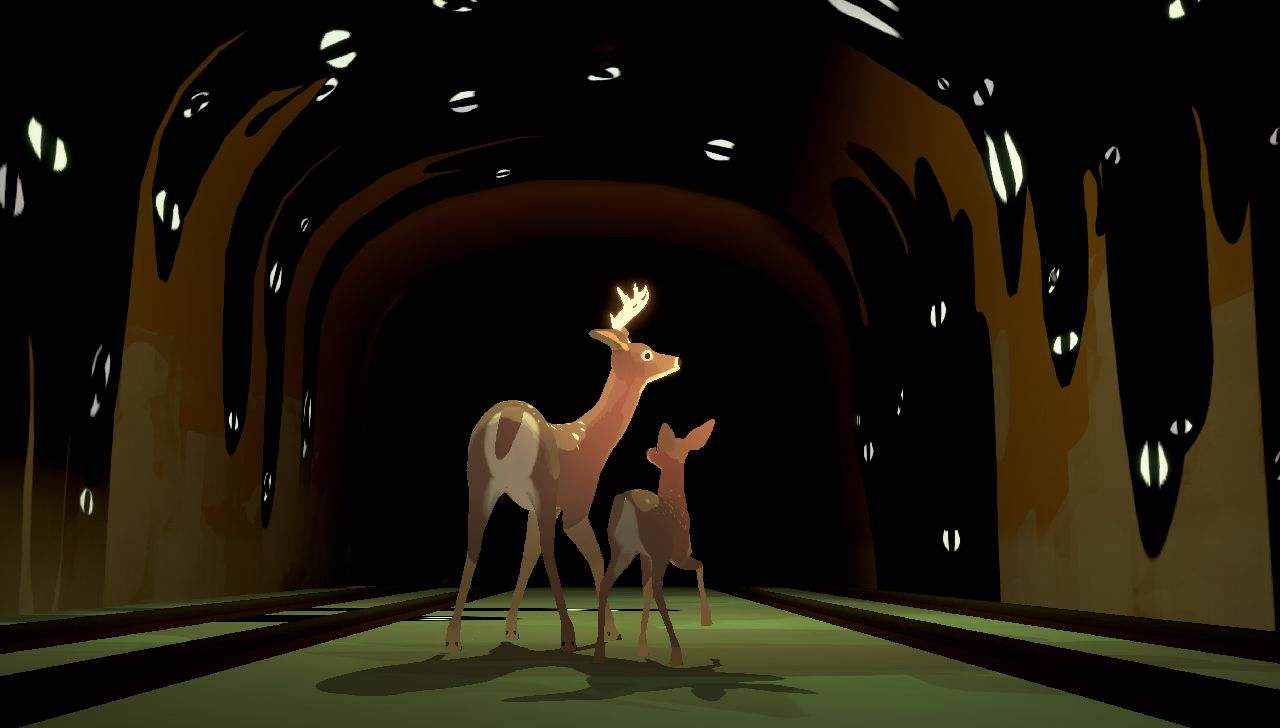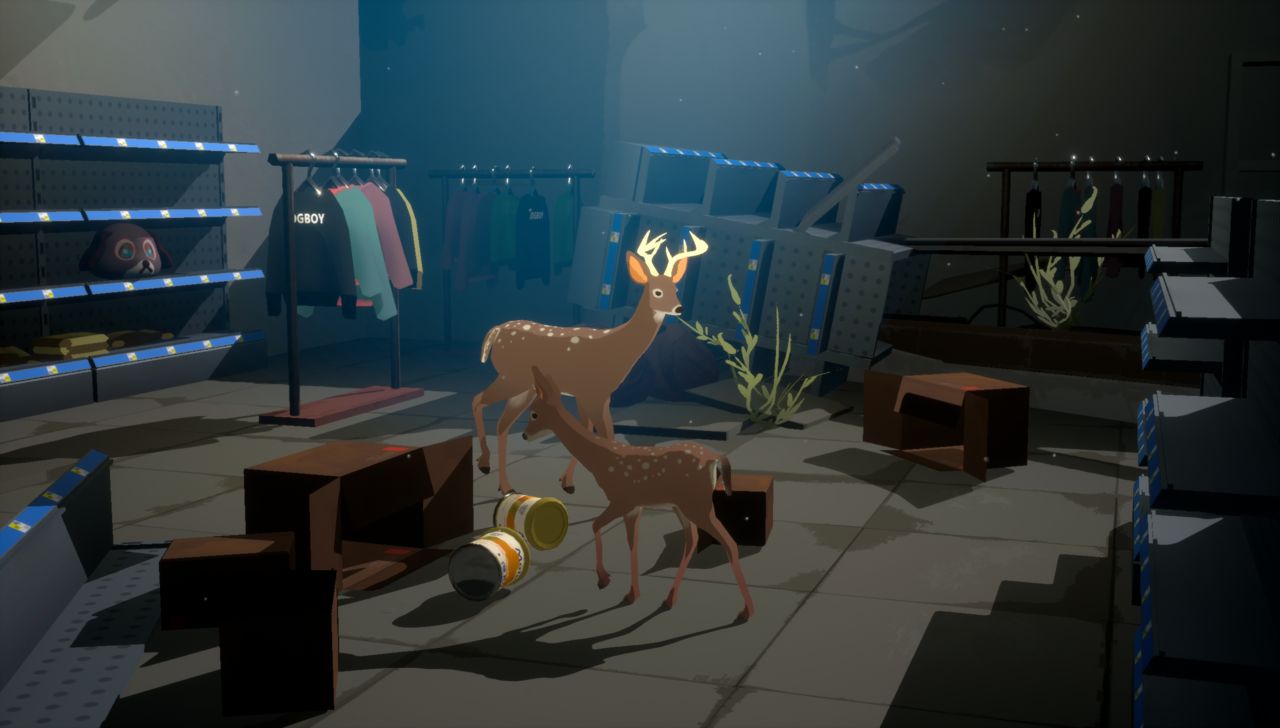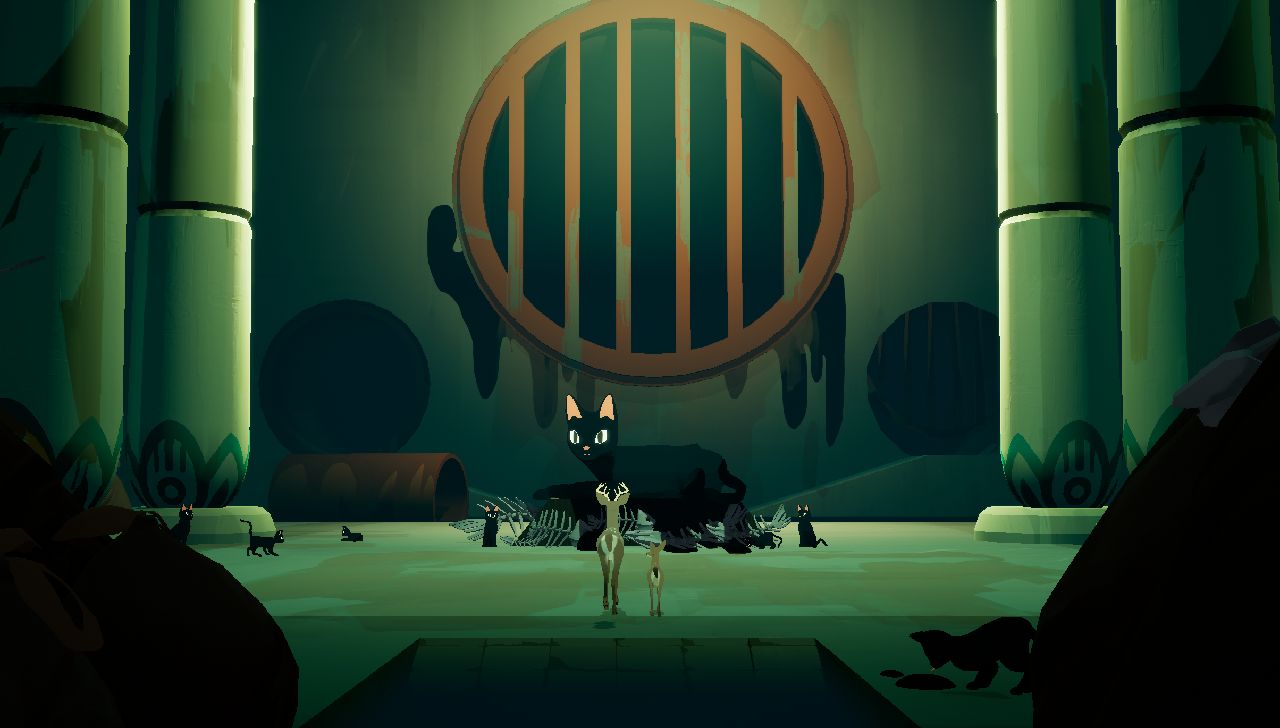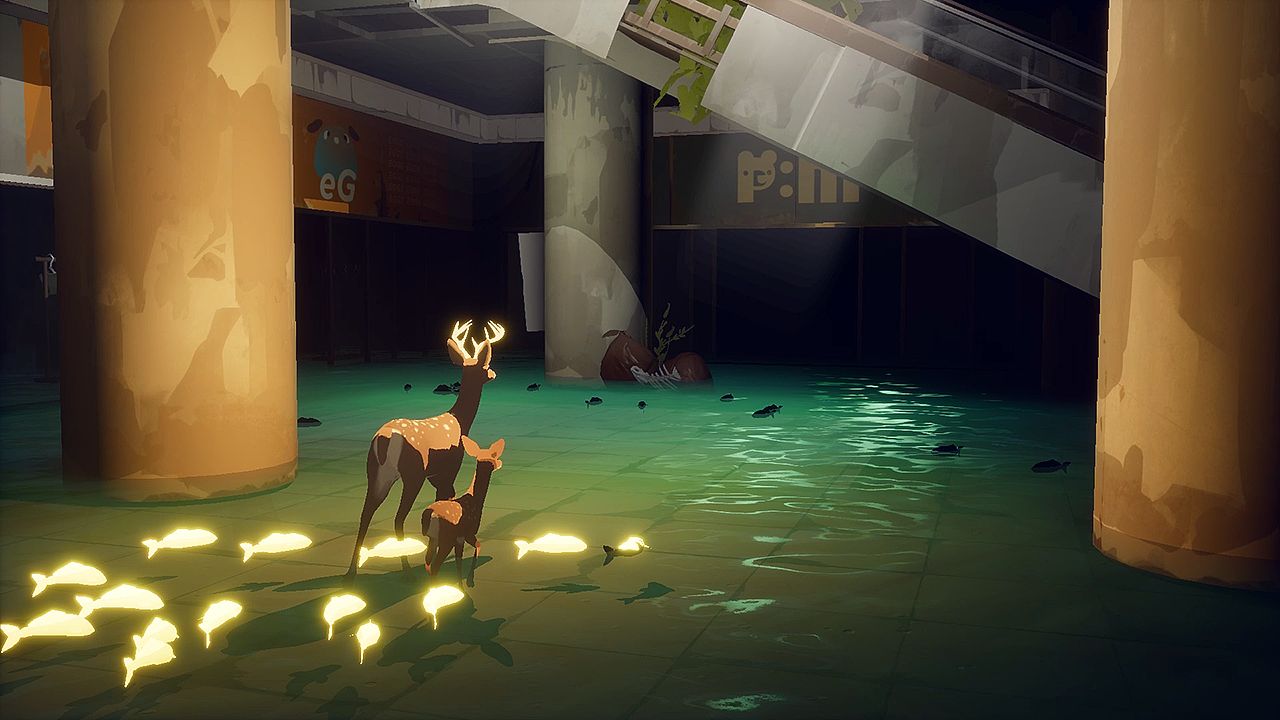Way to the Woods follows a deer and her fawn through a post-apocalyptic world
It's all the work of teenage solo developer Anthony Tan.
Way to the Woods caused quite a stir with its gorgeous trailer, in which a deer and her fawn navigate a flooded facility and nose through abandoned belongings in a post-apocalyptic world. Instead of zombies or mutants, it's a post-apocalypse with suburbs ruled by giant speaking cats, where the quiet calm of abandoned spaces is contrasted against danger in the shape of wolves and a mysterious black goo that contaminates the landscape.
Responses to the trailer mostly focused on the lush visuals and the surprising fact that Anthony Tan is the sole developer—at 19 years of age.
Since posting the first screenshots of Way to the Woods on Reddit all the way back in 2015, Tan has been hard at work. While at first he had to juggle game dev with the demands of high school and work as a visual artist (he worked on Owlchemy Lab's Job Simulator and Ricky and Morty: Virtual Rick-ality), he has since graduated and dedicated himself to game development full-time.

As impressive as Tan's achievement is for someone of his age, he is quick to assure me that he is by no means a genius. "I ask people for help all the time because I know nothing," he tells me via email.
It was like I woke up from the matrix and saw the source. Everything in games is just illusions and tricks.
Anthony Tan
The attention Way to the Woods garnered helped the Melbourne-based Tan to get in contact with fellow Australian indie developers and ask for advice. It's generally agreed upon that you don't just make a game by watching game design tutorials on the internet. But, up until this point, that's exactly what Tan has done.
It helps that he isn't easily frazzled. Rather than feeling the pressure now that everyone and their dog has reported on Way to Woods, instead he seems quite pleased about it.

"I'm really glad that people are excited about the game," he says. "It's really reassuring that I'm doing something right. I'm on my own developing for long stretches in a void, and never really know how people will respond to what I'm doing. Lots of feedback comes in when you put yourself out there, good and bad. Luckily it's been mostly positive, but I take all of it with a grain of salt and try to stay objective about everything. I've kind of got the blinders on from now to release to just focus on creating the game. Occasionally I peep out and see what the reception is like, but I'm just trying to stay afloat."
Keep up to date with the most important stories and the best deals, as picked by the PC Gamer team.
Tan is still learning something new every day, taking the good with the bad and trying to find workarounds if things won't translate the way he imagined. I ask him to describe something really useful he has learned, and he explains a technical breakthrough to me. "I was watching some videos on particle systems and node graphs a while back, because I honestly had no clue how people create something like really pretty moving flames. Once I started to get into texture panning and alpha multiplying my world was just expanded. It was like I woke up from the matrix and saw the source. Everything in games is just illusions and tricks. I started being able to break down particles into their parts and examine how it worked."

Tan is focused on delivering his vision first and foremost, rather than trying to cater to a target audience. "I just think about the player's experience," he tells me. "One thing I've been thinking about lately was how to accommodate people with certain disabilities, like vision impairments, and how to improve their experience."
I want to create this otherworldly, dreamlike feel, and dreams are weird.
Anthony Tan
Many larger studios don't invest time and resources into finding ways to make games more enjoyable for people with disabilities. Even with everything that's on his plate already, Tan thinks about them now, and it's considerate responses like this that make it easy to see why he is making a game inspired by works that exude compassion like thatgamecompany's Journey and the movies of Studio Ghibli. That said, Tan also cites The Last of Us as one of his influences.
In order to describe Way to the Woods, Tan leans heavily on another great passion of his: music. "The game is going to be somewhere between Frank Ocean's Blonde and Kanye West's Yeezus," he says. Other inspirations include rapper SABA and R&B singer SZA. With these artists in mind, his final musical inspiration seems a little left-field. "I love the work of Aivi & Surasshu, who did music for Steven Universe," he says. He makes Way to the Woods sound like it's somewhere between the music you might listen to wind down and what you put on to get yourself out of bed.

The unusual answer prompts me to ask him what overall feeling he is trying to convey. "I love ghost stories and supernatural stuff, but WTTW is not influenced by that. I want to create this otherworldly, dreamlike feel, and dreams are weird."
Small parts of this dream have been revealed: the main goal of his game is to survive the journey through the hazardous landscape by fighting enemies, making friends with other animals, and finding food, not unlike Might and Delight's 2013 game Shelter. But a post-apocalyptic version of Shelter, with talking cats.
Tan recently split from publisher Team17 in order to concentrate on finishing Way to the Woods without getting distracted by the business of promotion and distribution. He plans to have it done by early 2019.

